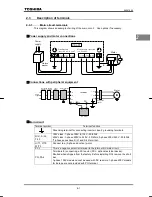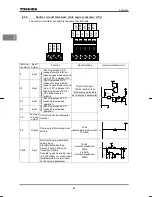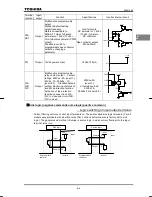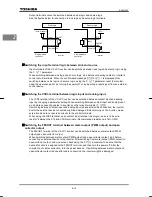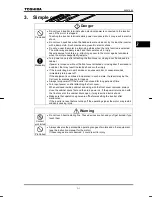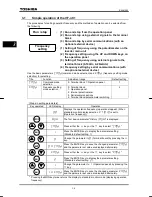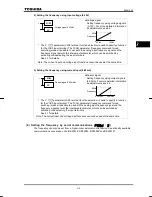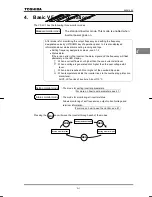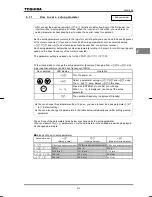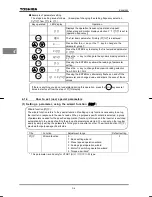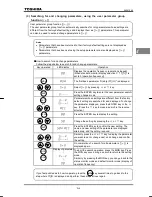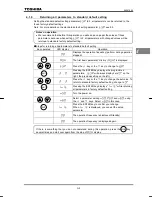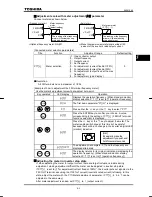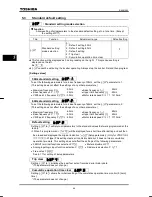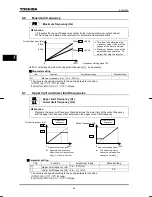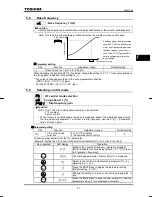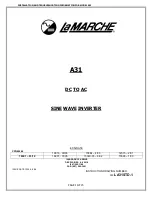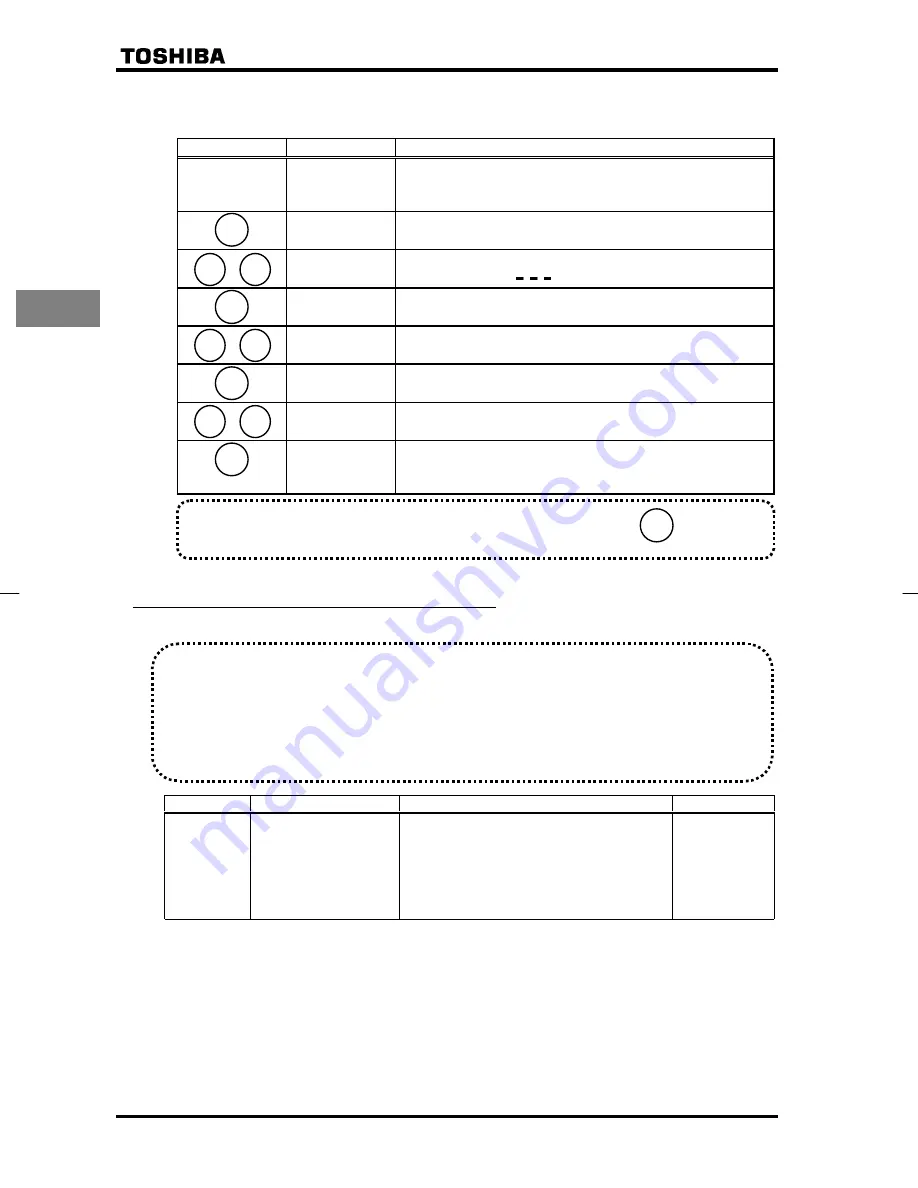
E6581090
D-6
4
■
Example of parameter setting
The steps in setting are as follows. (Example of changing the starting frequency selection
H
from
to
.)
Key operated
LED display
Operation
Displays the operation frequency (operation stopped).
(When standard monitor display selection
H
=
is set to
[operation frequency])
CWJ
The first basic parameter "History (
CWJ
)" is displayed.
H
Press either the
△
key or the
▽
key to change to the
parameter group
H
.
H
Press the ENTER key to display the first extended parameter
H
.
H
Press the
△
key to change to the dynamic braking selection
H
.
Pressing the ENTER key allows the reading of parameter
setting.
Press the
△
key to change the dynamic braking selection
from 0.5Hz to 1.0Hz
⇔
H
Pressing the ENTER key alternately flashes on and off the
parameter and changed value and allows the save of those
values.
4.1.4 How to set (use) special parameters
(1) Setting a parameter, using the wizard function (
CWH
)
Title
Function
Adjustment range
Default setting
CWH
Wizard function
0 : -
1 : Basic setting wizard
2 : Preset speed operation wizard
3 : Analog signal operation wizard
4 : Motor 1/2 switching operation wizard
5 : Torque up wizard*
0
* This parameter is valid only for VFNC1 (S)-
□□□□
P
□
-W type.
If there is anything you do not understand during this operation, press the key several
times to start over from the step of
CWJ
display.
MON
ENT
▲
▼
ENT
▲
▼
ENT
▲
▼
Wizard function (
CWH
):
The wizard function refers to the special function of calling up only functions necessary to set up
the inverter in response to the user’s needs. When a purpose-specific wizard is selected, a group
of parameters needed for the specified application (function) is formed and the inverter is switched
automatically to the mode of setting the group of parameters selected. You can set up the inverter
easily by simply setting the parameters in the group one after another. The wizard function (
CWH
)
provides four purpose-specific wizards.
MON

